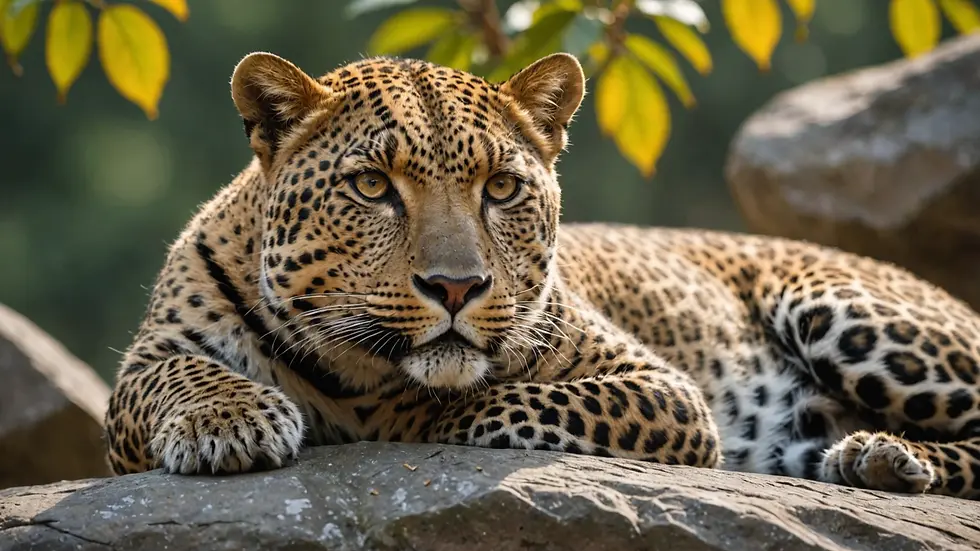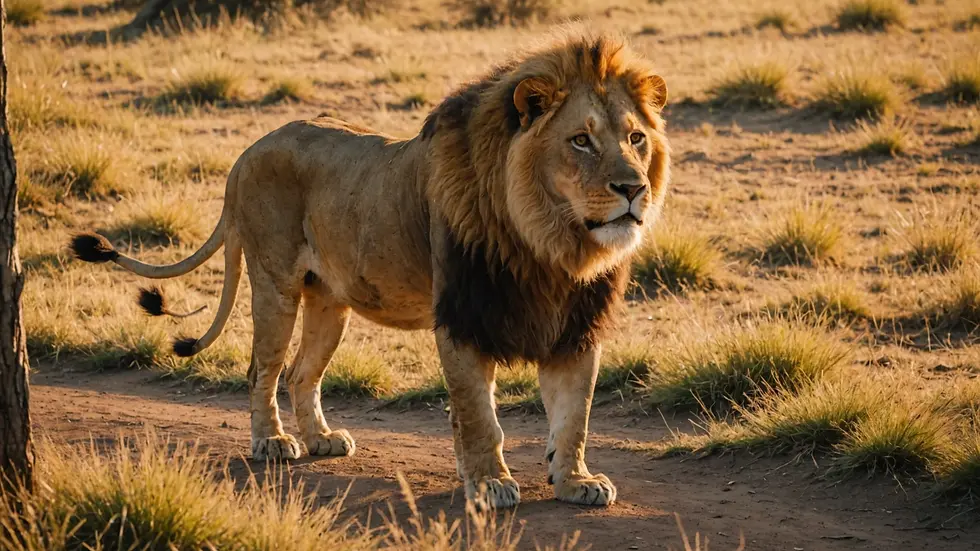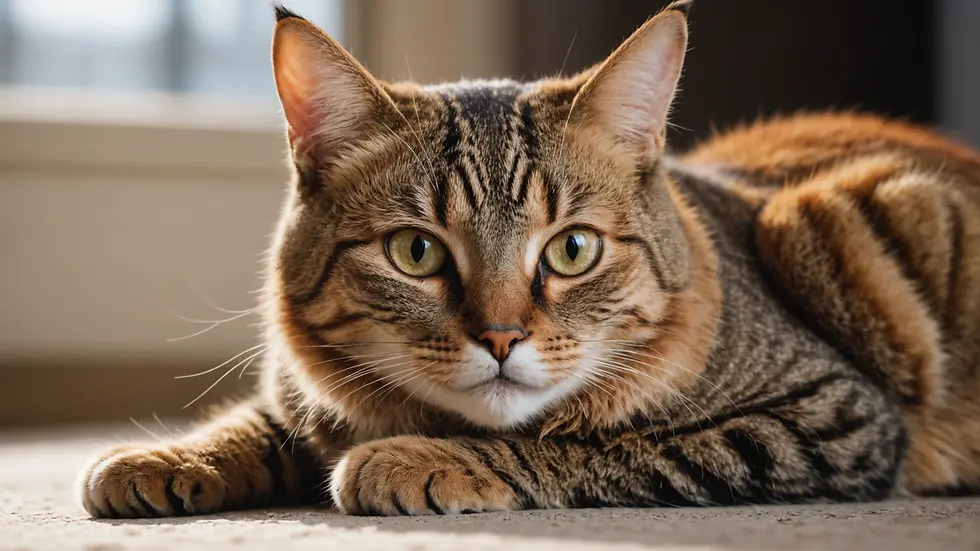Exploring the Similarities and Differences of Big Cats and Domestic Cats
- Jyotiraj Borah
- Feb 5
- 5 min read
Cats have fascinated humans for thousands of years. Whether they are lounging lazily on a windowsill or stalking prey in the wild, their allure is undeniable. While many people cherish their playful domestic cats, fewer appreciate the majesty of their wild relatives—big cats. This post takes you on an exciting journey into the world of both big cats and domestic cats, examining their similarities and differences in behavior, habitat, anatomy, and more.
Similarities Between Big Cats and Domestic Cats
Evolutionary Background
Both big cats and domestic cats belong to the same family, Felidae. This family includes admired members like lions, tigers, leopards, and cheetahs, in addition to our beloved house cats. Despite their different sizes and environments, they share a common ancestor, evident in their skeletal structures and hunting skills. For example, both types of cats possess:
Sharp retractable claws: Used for grip and hunting.
Keen eyesight and acute hearing: Essential tools for tracking prey in various environments.
These traits help felines thrive, whether they are navigating urban settings or prowling the savanna.
Hunting Behaviors
Both big and domestic cats exhibit intriguing hunting techniques. While their methods vary, their instincts are strikingly similar. Most felines prefer solitude when hunting, relying on stealth and agility.
Domestic cats often display these hunting instincts when they stalk shadows or pounce on small toys. For instance, a pet cat may spend hours chasing a laser pointer, mimicking the behavior it would naturally use to hunt smaller animals. In contrast, big cats may employ tactics like ambush hunting or quick sprints to catch larger prey, like a gazelle.
Communication Styles
Communication forms a crucial part of both big cats and domestic cats' lives, although their expressions differ based on their surroundings. Domestic cats may meow, purr, or hiss, while big cats utilize more powerful vocalizations like roars and growls.
Body language is vital in understanding feline communication. Both groups convey emotions through:
Tail position: A high tail signals happiness, while a low tail indicates fear.
Ear orientation: Forward-facing ears show curiosity, while flattened ears can indicate aggression.
These signals help cats communicate effectively with others.

Physical Attributes
Cats, regardless of their size, boast remarkable physical features. Both types have significant characteristics that aid in their survival, such as:
Retractable claws: Allow for stealthy movement and gripping prey.
Powerful muscles and sleek bodies: Designed for agility and quick movements.
On average, domestic cats weigh between 5 to 20 pounds, while big cats, like tigers, can weigh up to 600 pounds. Despite the stark size differences, both are built for agility and speed.
Differences Between Big Cats and Domestic Cats
Habitat Preferences
A key difference between big cats and domestic cats is their habitats. Big cats roam diverse ecosystems, including jungles, grasslands, and mountains. For example, the snow leopard is adapted to live in the cold, rugged mountains of Central Asia, while the jaguar prefers the dense rainforests of South America.
Domestic cats have adapted to human environments, commonly found in urban apartments and rural homes. This shift has influenced their behaviors, making them reliant on humans for food and shelter.
Social Structure
Big cats and domestic cats also exhibit distinct social structures. Many big cat species, such as lions, form social groups known as prides. These groups enhance their ability to hunt, defend territory, and raise young.
In contrast, most domestic cats are solitary creatures. While they can form loose colonies, especially in feral situations, they tend to be more independent and territorial due to their domestication.
Diet and Hunting Strategies
Both types of cats are obligate carnivores, but their diets differ. Big cats typically hunt large animals like deer, using strategy to secure a meal. For instance, a lion may work with its pride to take down a buffalo.
Domestic cats have a more varied diet, often preying on smaller animals like mice and birds, and many rely on commercially prepared cat food for sustenance. Statistics show that around 60% of pet cats are overweight or obese, primarily due to a lack of activity and over-reliance on processed food.

Protection Mechanisms
When it comes to self-defense, big cats employ different strategies than domestic cats. Big cats rely on their size and presence to fend off threats and are known as apex predators, sitting atop the food chain.
Domestic cats, smaller in size, prefer to evade danger. They may display aggressive posturing or rely on their speed to escape from threats, often choosing to avoid confrontation.
Behaviorally Speaking
Play and Development
Play is essential for the development of both big cats and domestic cats, as it sharpens their hunting skills. Young big cats, like cubs, engage in playful activities that mimic their future hunting techniques. For instance, cubs may wrestle with siblings to build physical strength and social bonds.
Domestic cats also benefit from play, whether they chase toys or climb furniture. However, their play often takes place in a more controlled setting, which alters the nature of their interactions.
Grooming Habits
Grooming serves an essential purpose for cats, promoting hygiene and reducing stress. Both big cats and domestic cats dedicate substantial time to grooming their fur.
Big cats often use their tongues to clean hard-to-reach spots but engage in social grooming with other group members. Domestic cats may groom themselves but can also groom their owners as a sign of affection and connection.

The Role of Environment
Conservation Status
The conservation of big cats is a pressing issue, with many species facing endangerment from habitat loss, poaching, and human conflict. Statistics reveal that the global population of tigers has decreased by approximately 96% over the past century due to these factors. Protecting their habitats is critical to ensuring their survival.
Conversely, domestic cats are abundant but can negatively impact wildlife populations when allowed to roam freely. For instance, studies suggest that outdoor domestic cats kill billions of birds and small mammals annually, highlighting the need for responsible pet ownership.
Human Interaction
The relationship between humans and cats varies greatly between big and domestic cats. Domestic cats are often seen as cherished companions, while big cats are frequently kept in captivity, such as in zoos or sanctuaries, where their welfare is prioritized.
While there is advocacy for the conservation of big cats, public perception can sometimes lag. Raising awareness about the importance of protecting big cats and their habitats is essential for a sustainable future.
Final Thoughts
Despite significant differences in their environments and lifestyles, big cats and domestic cats share common ancestry and exhibit many similar traits. Understanding these similarities and differences fosters a greater appreciation for their unique adaptations and behaviors.
Through conservation initiatives and responsible pet ownership, we can contribute to a brighter future for both wild and domestic cats. Embracing the rich diversity within the feline family deepens our connection to these remarkable animals and inspires a commitment to protect them for generations to come.
By exploring the fascinating traits of big cats and domestic cats, we not only become informed but also develop empathy for these creatures, whether they roam freely in the wild or curl up beside us at home.




Comments